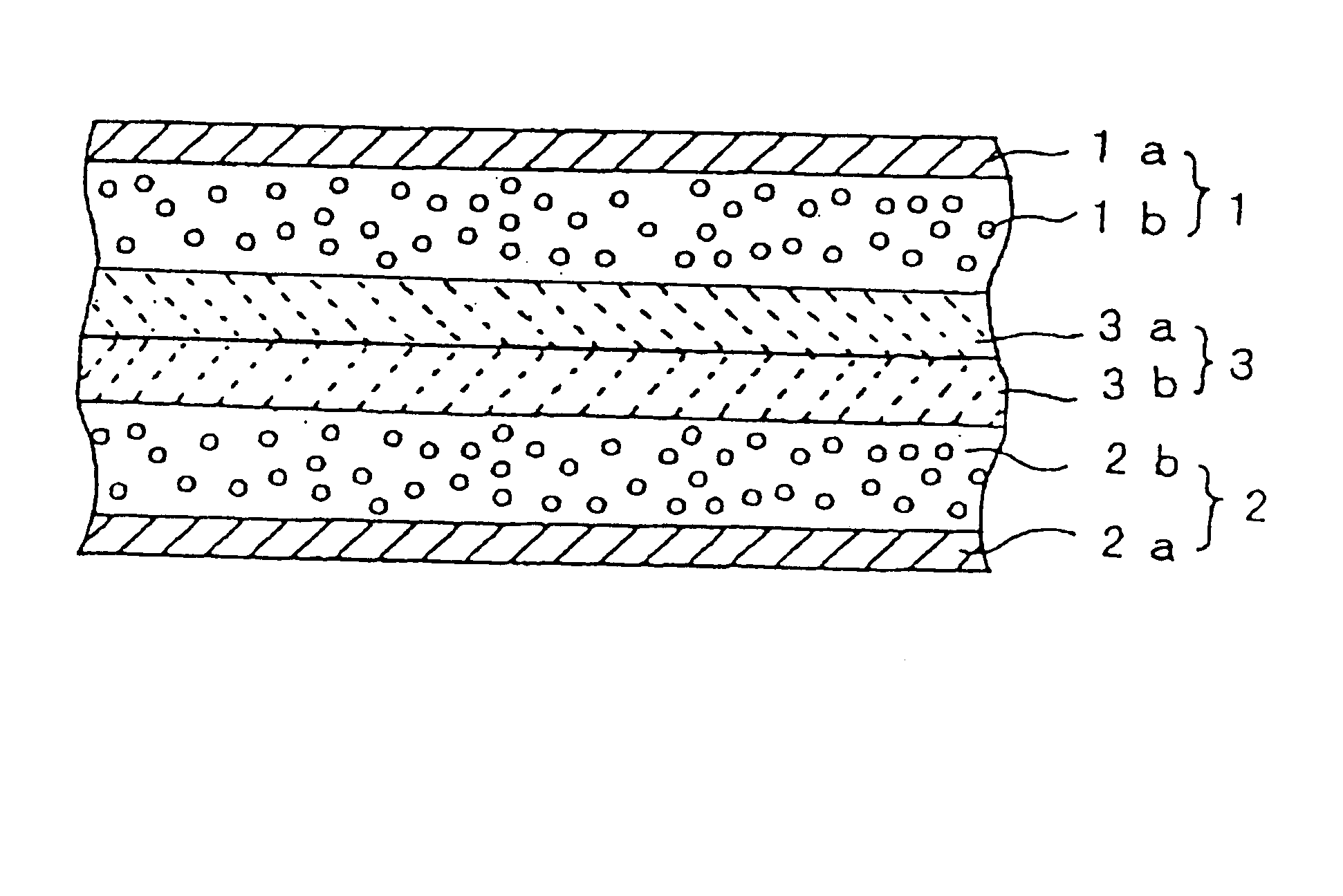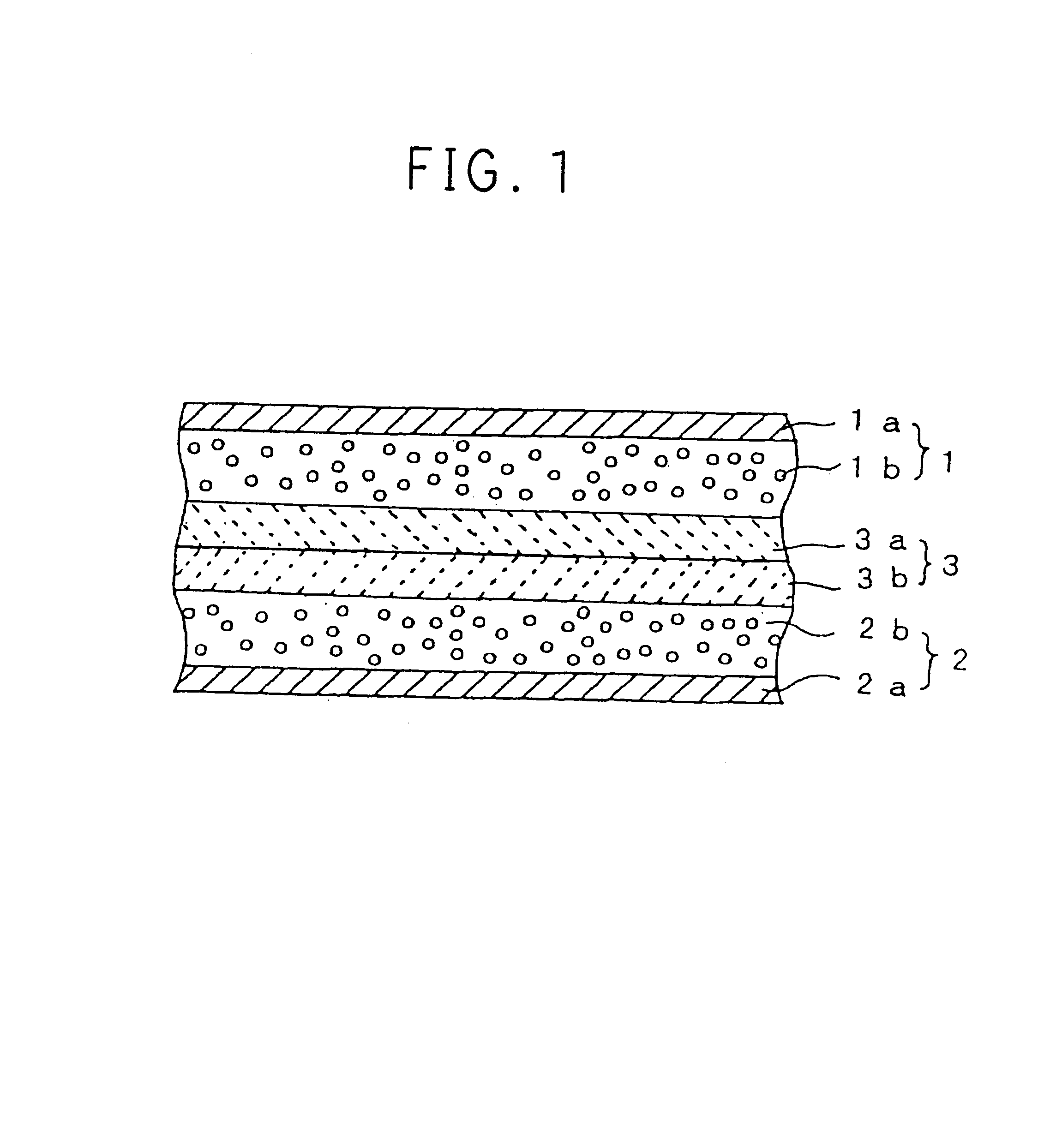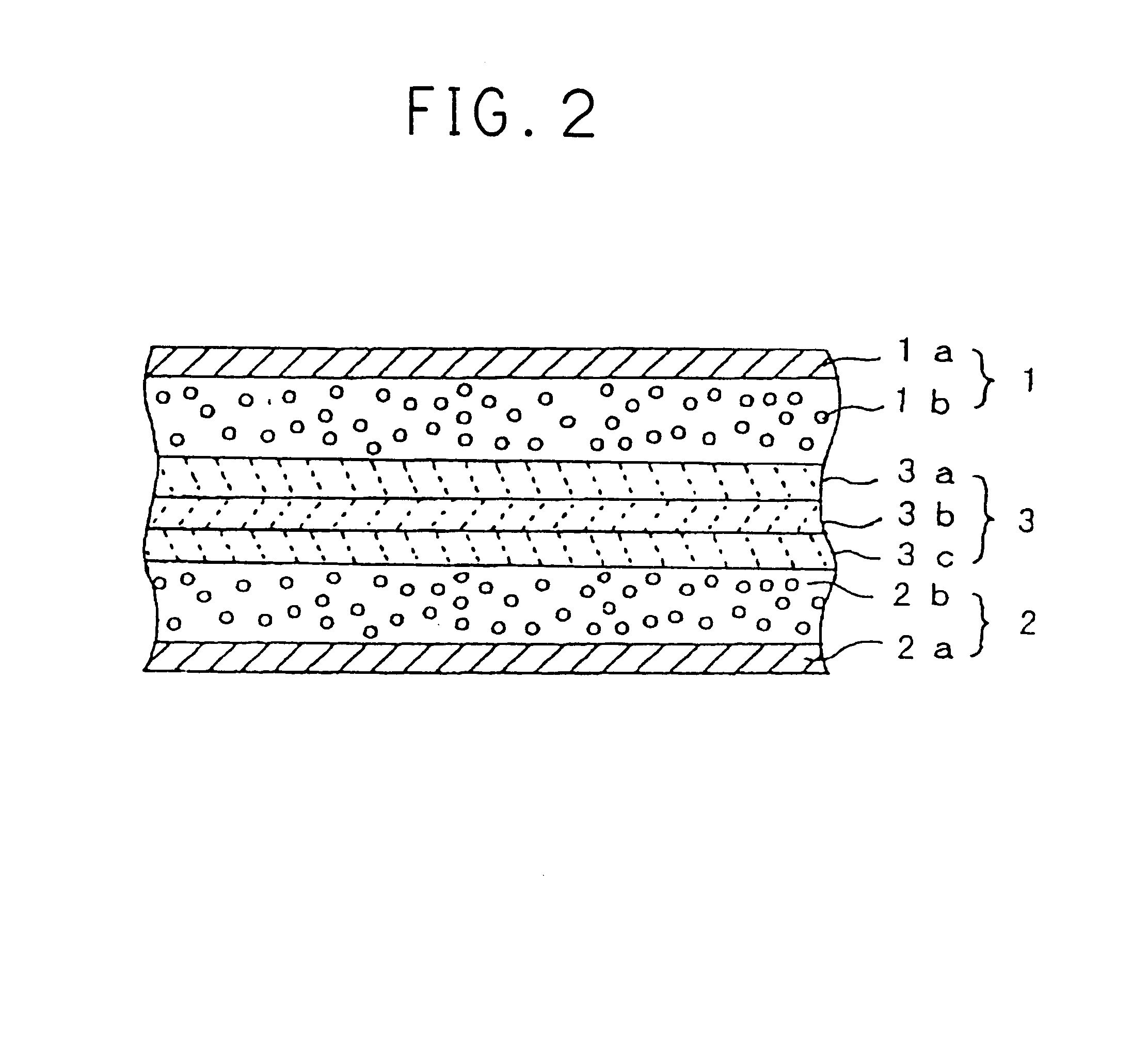Separator for battery and battery
a separator and battery technology, applied in the field of separators for batteries and batteries, can solve the problems of deformation of separators, shrinkage and generation of holes, insulation breaking, etc., and achieve the effects of low cost, easy handling, and excellent mass-productivity
- Summary
- Abstract
- Description
- Claims
- Application Information
AI Technical Summary
Benefits of technology
Problems solved by technology
Method used
Image
Examples
example 2
(Process for Preparing Separator)
Glass fiber (having a diameter of 5 .mu.m) was measured by using a micrometer to spread it as uniformly as possible to the extent that the thickness becomes at most 20 .mu.m. Thereto was sprayed 10% poly(vinyl alcohol) aqueous solution to mount a porous polypropylene sheet (trade name CELL GUARD #2400 available from Hochst Celanese Co., Ltd.) thereon. After sufficient drying, there was prepared a separator 3 wherein a second porous film 3b comprising the glass fiber is laminated on a first porous layer 3a.
(Evaluation of Battery)
By using this separator, a battery was prepared in the same manner as in Example 1. As to the characteristics of the battery, energy density per weight was 60 Wh / kg.
Also, in case of heating the battery in charging condition to 150.degree. C., there were found no unusual conditions such as short-circuit of the electrodes due to melting of the separator 3.
example 3
(Process for Preparing Separator)
Alumina ultra-fine particles (available from Degussa Co., Ltd.) and 30% by weight of poly(vinylidene fluoride) were stirred by using a colloid mill to prepare a mixture containing about 15% by weight thereof based on N-methylpyrolidone. It was applied to a porous polypropylene sheet (trade name CELL GUARD #2400 available from Hochst Celanese Co., Ltd.) according to screen-printing and was dried to prepare a separator 3 wherein a second porous film 3b comprising the alumina ultra-fine particles was laminated on a first porous layer 3a.
(Evaluation of Battery)
By using this separator, a battery was prepared in the same manner as in Example 1. As to the characteristics of the battery, energy density per weight was 70 Wh / kg.
Also, in case of heating the battery in charging condition to 170.degree. C., there were found no unusual conditions such as short-circuit of the electrodes due to fusion of the separator 3.
example 4
(Process for Preparing Separator)
Cross-linked acrylic ultra-fine particles (MP300F available from Soken Chemicals Co., Ltd.) and 30% by weight of poly(vinylidene fluoride) were stirred by using a colloid mill to prepare a mixture containing about 10% by weight thereof based on N-methylpyrolidone. It was applied to a porous polypropylene sheet (trade name CELL GUARD #2400 available from Hochst Celanese Co., Ltd.) according to screen-printing and was dried to prepare a separator 3 wherein a second porous film 3b comprising the cross-linked acrylic ultra-particles was laminated on a first porous layer 3a.
(Evaluation of Battery)
By using this separator, a battery was prepared in the same manner as in Example 1. As to the characteristics of the battery, energy density per weight was 75 Wh / kg.
Also, in case of heating the battery in charging condition to 150.degree. C., there were found no unusual conditions such as short-circuit of the electrodes due to fusion of the separator 3.
PUM
| Property | Measurement | Unit |
|---|---|---|
| particle size | aaaaa | aaaaa |
| softening temperature | aaaaa | aaaaa |
| particle size | aaaaa | aaaaa |
Abstract
Description
Claims
Application Information
 Login to View More
Login to View More - R&D
- Intellectual Property
- Life Sciences
- Materials
- Tech Scout
- Unparalleled Data Quality
- Higher Quality Content
- 60% Fewer Hallucinations
Browse by: Latest US Patents, China's latest patents, Technical Efficacy Thesaurus, Application Domain, Technology Topic, Popular Technical Reports.
© 2025 PatSnap. All rights reserved.Legal|Privacy policy|Modern Slavery Act Transparency Statement|Sitemap|About US| Contact US: help@patsnap.com



